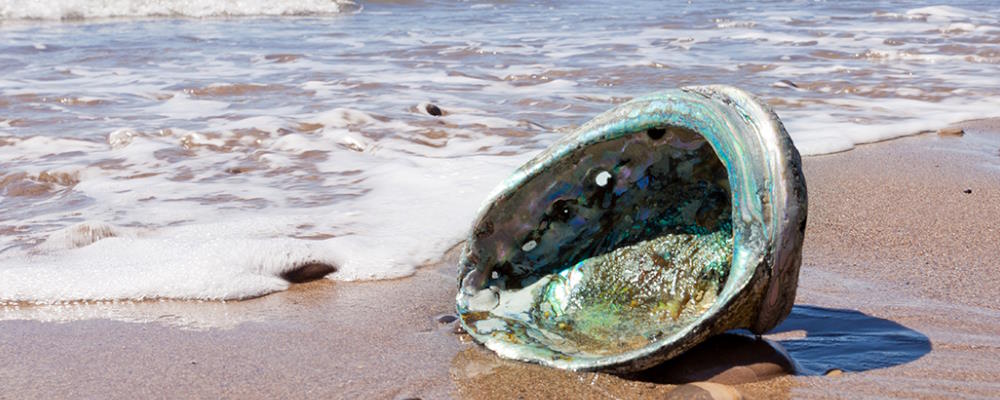Paua shells are a natural wonder that display very luxurious and exclusive colours in colourful gradations that depict the true essence of the ocean. These forms, along with their textures and shapes, are not only beautiful but also make them a favourite of renowned artists and jewellers around the world.
In addition to attracting the soul through its aesthetic appeal, paua shells have a very high value in decorative and artistic uses. Such as in jewellery making, inlays and ornamental art, which combine natural beauty with the expression of the soul. The various colours and patterns of this species have so far inspired many artists and designers who have influenced traditional and modern art. Uncovering its story will make us realise that paua shells have become a representation of creativity and cultural heritage.
Paua Shells Explanation
Paua is the Maori name for a group of edible sea snails that are native to New Zealand, belonging to the species Haliotis Iris. The colour of this sea hare is reflected in its thick, strong nacreous shell that ranges from deep green and blue, purple to pink. The inner shell of the paua is also coated with mother of pearl and is highly praised for its brilliant colours. This is due to the crystalline structure of the inner shell, which reflects light across the spectrum of colours.
Scientifically classified in the genus Haliotis, the paua is remarkable for its strikingly coloured shell. The particular environmental conditions of the New Zealand coastline, where the paua lives, are a factor in this. Other factors contributing to the development of the rich colours in the shell include its mollusc diet, which is rich in red and green seaweeds. Considering the biological and environmental influences on the growth and characteristics of the paua, it is easy to understand why other shellfish in the world are similar to it.
Geographical Distribution
Paua shells are found predominantly in the cold, clear waters of New Zealand on rocky shores, where they can adhere securely to the substrate. The geographical isolation and special conditions of New Zealand’s waters have allowed the country to develop paua features and colours that are unusual for any other abalone species in the world.
While New Zealand is best known for paua, other species are also widespread in the pacific including Japan and Australia. However, the New Zealand species is particularly renowned for having one of the most striking colour variations making it a major cultural and commercial resource. This level of geographical specificity not only adds to its rarity but also makes New Zealand paua desirable and implies that local conservation will be essential in maintaining healthy populations.
Habitat and Ecology
Like their colourful shells, the natural habitat of the paua is also very dynamic. This habitat is generally found in shallow waters, where this mollusc thrives in rocky coastal areas with constant crashing waves, bringing with it a food supply. Their unique ability to cling to rocks and rough waters keeps the paua safe from many of their natural predators, helping them survive in such a hostile environment.
Paua play an important ecological role in the environment. They ensure that there is no overgrowth of seaweed and algae, meaning that they generally lead an ecological balanced life. Their current state of health usually reflects the overall health of their habitat or conversely, the good quality of the marine environment in their homeland. Habitats need to be protected not only for the paua but also for the many species of life that share them.
Economic Impact
Wherever paua shells are found, they are an important part of the local economy. They bring in much needed foreign exchange, especially in the form of jewellery and craft ornaments. This demand has given rise to a strong local industry involving paua, keeping many people employed and alive.
However, the industry faces challenges such as poaching and habitat change that can threaten paua populations as well. All of these issues need to be taken into account if a truly sustainable paua industry is to be established. All counter poaching measures must be considered to protect this resource and realise the economic benefits of harvesting paua in a proper and sustainable manner.
Conclusion
Paua shells are a testament to the wonder and biodiversity of the ocean, with a close relationship between health and condition of the ocean and cultural heritage. Knowledge of the origins and impacts of paua shells is essential to develop awareness of their aesthetic value and sustainable practices in conserving these treasures. How the balance between cultural significance and conservation needs is maintained in the near future, will determine how long these colourful representatives of the sea continue to amaze and inspire people around the world.
Dive into the vibrant world of Tide Jewellery Paua Shells at The Gift Shop in Oulton Broad, where the enchanting beauty of paua shells awaits you. Each and every one of them acts like an iridescent testimony to the glories of the ocean, perfect for that nature-art-loving person in your life or as a special gift. Visit us today and find that one piece of jewellery that will act as a link to the wonder of the deep blue.

